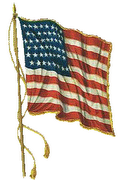Catholic Roots of Mardi Gras
Mardi Gras, literally "Fat Tuesday," has grown in popularity in recent years as a raucous, sometimes hedonistic event. But its roots lie in the Christian calendar, as the "last hurrah" before Lent begins on Ash Wednesday. That's why the enormous party in New Orleans, for example, ends abruptly at midnight on Tuesday, with battalions of streetsweepers pushing the crowds out of the French Quarter towards home.
What is less known about Mardi Gras is its relation to the Christmas season, through the ordinary-time interlude known in many Catholic cultures as Carnival. (Ordinary time, in the Christian calendar, refers to the normal "ordering" of time outside of the Advent/Christmas or Lent/Easter seasons.
Carnival comes from the Latin words carne vale, meaning "farewell to the flesh." Like many Catholic holidays and seasonal celebrations, it likely has its roots in pre-Christian traditions based on the seasons. Some believe the festival represented the few days added to the lunar calendar to make it coincide with the solar calendar; since these days were outside the calendar, rules and customs were not obeyed. Others see it as a late-winter celebration designed to welcome the coming spring. As early as the middle of the second century, the Romans observed a Fast of 40 Days, which was preceded by a brief season of feasting, costumes and merrymaking.
The Carnival season kicks off with the Epiphany, also known as Twelfth Night, Three Kings' Day and, in the Eastern churches, Theophany. Epiphany, which falls on January 6, 12 days after Christmas, celebrates the visit of the Wise Men bearing gifts for the infant Jesus. In cultures that celebrate Carnival, Epiphany kicks off a series of parties leading up to Mardi Gras.
Epiphany is also traditionally when celebrants serve King's Cake, a custom that began in France in the 12th century. Legend has it that the cakes were made in a circle to represent the circular routes that the Wise Men took to find Jesus, in order to confuse King Herod and foil his plans of killing the Christ Child. In the early days, a coin or bean was hidden inside the cake, and whoever found the item was said to have good luck in the coming year. In Louisiana, bakers now put a small baby, representing the Christ Child, in the cake; the recipient is then expected to host the next King Cake party.
There are well-known season-long Carnival celebrations in Europe and Latin America, including Nice, France; Cologne, Germany; and Rio de Janeiro, Brazil. The best-known celebration in the U.S. is in New Orleans and the French-Catholic communities of the Gulf Coast. Mardi Gras came to the New World in 1699, when a French explorer arrived at the Mississippi River, about 60 miles south of present day New Orleans. He named the spot Point du Mardi Gras because he knew the holiday was being celebrated in his native country that day.
Eventually the French in New Orleans celebrated Mardi Gras with masked balls and parties, until the Spanish government took over in the mid-1700s and banned the celebrations. The ban continued even after the U.S. government acquired the land but the celebrations resumed in 1827. The official colors of Mardi Gras, with their roots in Catholicism, were chosen 10 years later: purple, a symbol of justice; green, representing faith; and gold, to signify power.
Mardi Gras literally means "Fat Tuesday" in French. The name comes from the tradition of slaughtering and feasting upon a fattened calf on the last day of Carnival. The day is also known as Shrove Tuesday (from "to shrive," or hear confessions), Pancake Tuesday and fetter Dienstag. The custom of making pancakes comes from the need to use up fat, eggs and dairy before the fasting and abstinence of Lent begins.
Pertinent Links:
1) Catholic Roots of Mardi Gras
Tuesday, February 20, 2007
Subscribe to:
Post Comments (Atom)




No comments:
Post a Comment